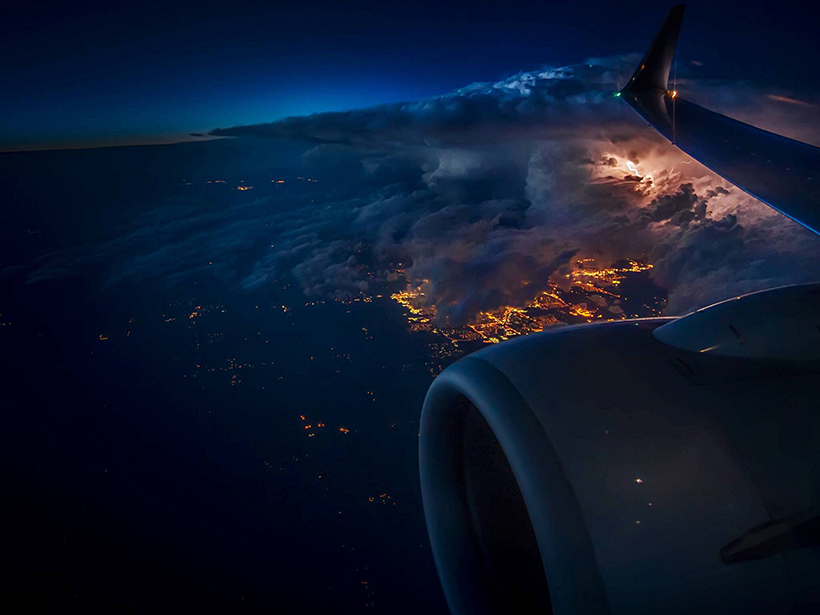Source: Journal of Geophysical Research: Atmospheres
Whenever you’re on an airplane descending into a thunderstorm, it’s a good bet you’ll be in for a bumpy ride: storms are driven by convective air currents that produce turbulence. But a new study investigates a deeper connection between turbulence and thunderstorms: Could turbulence play a role in generating lightning?
Mareev and Dementyeva develop models to assess whether swirling, turbulent air can enhance the buildup of static electricity in the atmosphere in thunderstorms, snowstorms, and dust storms. It’s an idea that the authors say has received surprisingly little attention to date. Most atmospheric storm models that incorporate turbulence instead assume that it will dissipate electric charge, mixing positively and negatively charged droplets together. This mixing would reduce the separation of charge between the clouds and ground that presages lightning strikes.
But the authors’ calculations show that turbulence can do just the opposite and build up the electric field in a thunderhead, depending on the type of precipitation and the size of the particles.
According to their model, in a thunderstorm with a preexisting electric field, turbulence can enhance electric charge by increasing the rate at which water droplets collide, the number of such collisions, and thereby the number of electrons stripped or added. These droplets may start out neutrally charged, but if the collision brings into contact oppositely charged ends of the droplets, some of the positive and negative charge will cancel out. This interaction leaves the rebounding droplets with net charge, and in the presence of the storm’s electric field, they will begin to separate: negative charge to the ground and positive charge to the clouds, building up conditions ripe for lightning strikes.
In a snowstorm, with lower temperatures and smaller particles, turbulence can also enhance static electricity by increasing the collisions of snowflakes and frozen water droplets like hail. These particles exchange electrons when they collide and separate because of their different sizes, contributing to the separation of charge that builds up the electric field.
This type of enhancement requires no preexisting electric field, making the contribution of turbulence to thundersnow even more important than in thunderstorms. A similar phenomenon can also happen in dust storms, according to the model.
These findings will need observational confirmation, say the authors. This observation could be performed by sounding balloons, airplanes, or drones that can fly inside storm systems and measure both the level of turbulence and the electric field. (Journal of Geophysical Research: Atmospheres, https://doi.org/10.1002/2016JD026150, 2017)
—Mark Zastrow, Freelance Writer
Citation:
Zastrow, M. (2017), How storm turbulence can spark lightning, Eos, 98, https://doi.org/10.1029/2017EO077089. Published on 06 July 2017.
Text © 2017. The authors. CC BY-NC-ND 3.0
Except where otherwise noted, images are subject to copyright. Any reuse without express permission from the copyright owner is prohibited.

